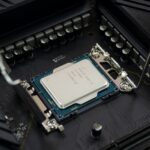Wireless connections offer the convenience of accessing the internet without the limitations of wires. However, many users experience a frustrating issue when their device does not reconnect to Wi-Fi after waking from sleep mode. This common problem can interrupt work flow and requires a solution that is both effective and easy to implement.
Identifying the root of the problem is essential to resolving connectivity issues. Factors such as network card settings, power management features, and system configurations can all play a role. Some users may find that simple steps like running a network troubleshooter or restarting their computer can quickly restore their internet connection.
Wireless Connection Doesn’t Reconnect After Sleep
If your device doesn’t automatically reconnect to Wi-Fi after waking from sleep, you’re not alone. This issue can be frustrating, especially if it happens frequently. Below is a step-by-step guide to help you troubleshoot and fix this problem.
1. Check Power Management Settings
Windows often disables the network adapter to save power during sleep. To stop this from happening:
- Press Win + X and select Device Manager.
- Expand Network adapters.
- Right-click your wireless adapter and choose Properties.
- Go to the Power Management tab.
- Uncheck “Allow the computer to turn off this device to save power.”
- Click OK and restart your computer.
2. Disable Fast Startup (Windows)
Fast Startup can cause issues with device initialization after sleep or hibernation.
- Go to Control Panel > Power Options.
- Click “Choose what the power buttons do”.
- Click “Change settings that are currently unavailable”.
- Uncheck “Turn on fast startup”.
- Click Save changes and reboot.
3. Update Wireless Network Drivers
Outdated or buggy drivers can cause reconnection issues.
- Open Device Manager.
- Right-click your wireless adapter and select Update driver.
- Choose Search automatically for drivers or download the latest driver from the manufacturer’s website.
4. Set Wi-Fi to Automatically Reconnect
Make sure your system is set to reconnect to known networks automatically.
- Click the Wi-Fi icon in the system tray.
- Click on your connected network.
- Ensure the “Connect automatically” option is checked.
5. Adjust Power Plan Settings
Some power plans may put your network adapter in low-power mode.
- Go to Control Panel > Power Options.
- Click Change plan settings next to your selected plan.
- Click Change advanced power settings.
- Expand Wireless Adapter Settings > Power Saving Mode.
- Set it to Maximum Performance for both battery and plugged in.
6. Reset TCP/IP Stack
If none of the above helps, try resetting your network settings:
- Open Command Prompt as Administrator.
- Run the following commands one at a time:
- Restart your computer.
netsh int ip reset
netsh winsock reset
ipconfig /release
ipconfig /renew
ipconfig /flushdns7. Check for Conflicts with VPNs or Firewalls
Some VPN clients or third-party firewalls interfere with network reconnections. Try temporarily disabling them to see if the issue goes away. If so, consider switching to a more compatible security solution.
8. Update Your Operating System
Ensure your OS is fully updated. System updates often include bug fixes for network and sleep-related issues.
Still Having Issues?
If your connection still won’t automatically reconnect, consider using a USB Wi-Fi adapter to see if your internal card is at fault. As a last resort, you can also set up a scheduled task to reconnect Wi-Fi on wake.
Key Takeaways
- Wi-Fi disconnection after sleep mode can disrupt user experience.
- Determining the cause is crucial for fixing connection problems.
- Practical troubleshooting steps may resolve the issue.
Diagnosing Connectivity Issues After Sleep
When a computer fails to reconnect to Wi-Fi after sleeping, it could disrupt work and productivity. This section helps to identify and fix the issue.
Checking Network Adapters in Device Manager
Open the Device Manager by pressing Windows Key + X and choosing it from the menu. Expand the Network adapters section. Look for your wireless network adapter. Right-click it to see if it is functioning properly. Device Manager can identify hardware issues and help you understand if your wireless adapter is the cause of connectivity problems.
Updating or Reverting Drivers
Drivers can cause issues with connectivity. In Windows Update, check if there are any pending updates for your network adapter’s driver. If problems began after an update, you may need to roll back to an earlier driver version. In Device Manager, right-click on the wireless adapter, select Properties, go to the Driver tab, and choose to Update or Roll Back Driver as needed.
Altering Power Settings
Power settings in Windows can turn off devices to save energy. To change this, go to Control Panel, select Power Options, and then click on Change plan settings. Go to Advanced power settings, find your wireless adapter settings, and set it to Maximum performance.
Managing Wi-Fi Settings and Profiles
Sometimes Wi-Fi issues occur because of incorrect settings or profiles. Make sure the right network profile is active and the SSID is correct. In Windows Settings under Wi-Fi, forget the network and reconnect to ensure the profile settings are correct.
These steps can help in diagnosing and fixing connectivity problems after a computer wakes up from sleep or hibernation mode.







